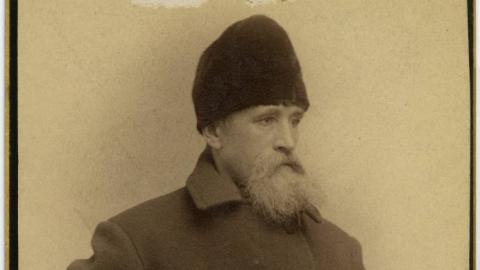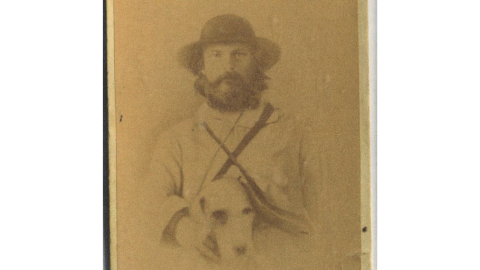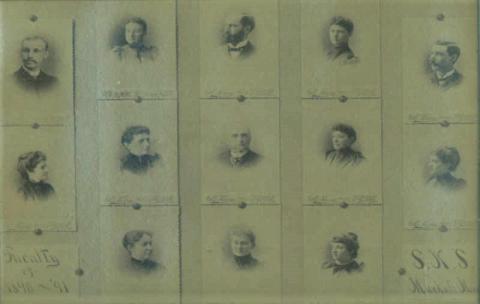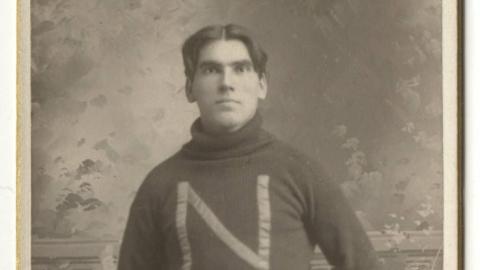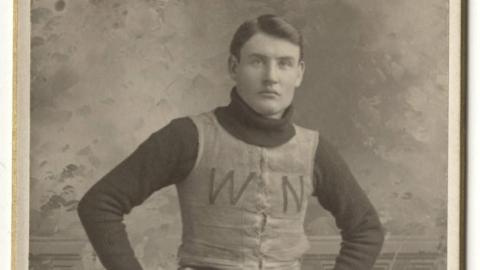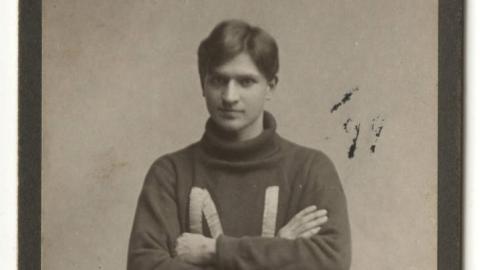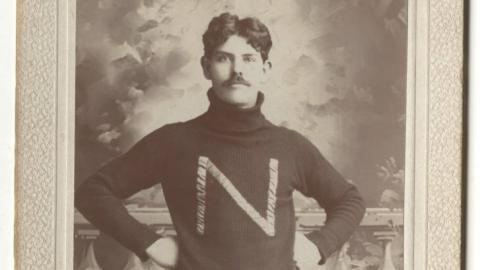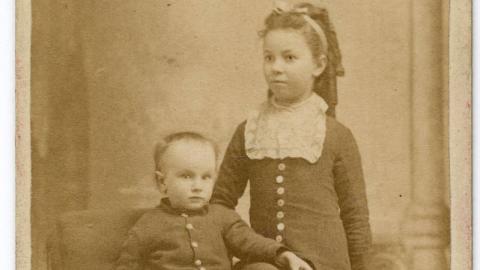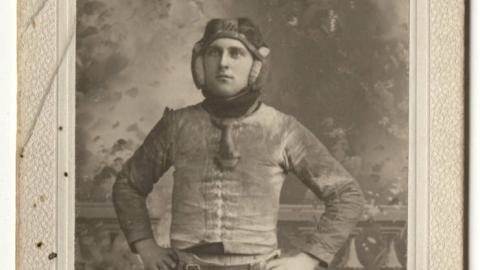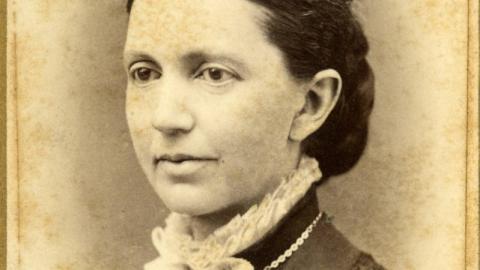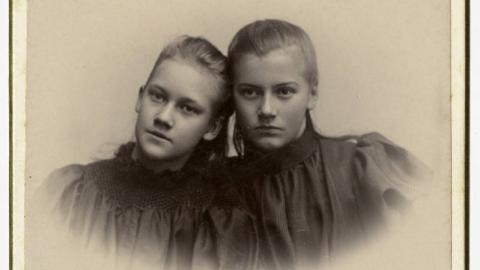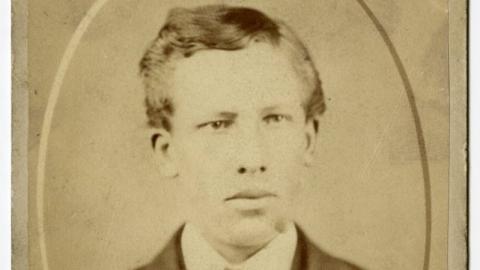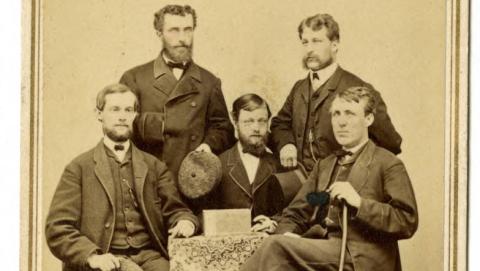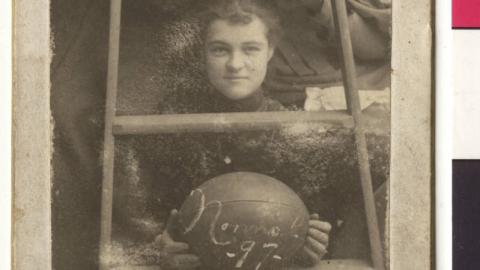Primary Source Set
by Greta Bahnemann, Metadata Librarian, Minnesota Digital Library, Minitex
Arts and Literature Format Highlight
The Carte de Visite photographic technique was first developed in the early 1850s and was patented by the Parisian photographer Andre Adolphe Disderi in 1854. The literal translation of "Carte de Visite" from the French is "visiting card" and it was often shared and exchanged as a calling card. The format name is often abbreviated to "CdV" by both collectors and photographic historians. The process of making a CdV begins with an albumen photographic image which was then glued onto a small piece of cardstock measuring 2.3 x 3.5 inches. The resulting image could be easily carried in a wallet or purse.
The CdV's smaller size allowed the images to be left as calling cards, traded, and collected in albums. The relative affordability of these photographs made them available to the middle class. The format's subjects included members of the general public as well as the celebrities of the day, including European royal families, actors, authors, artists, politicians, sports figures, and Civil War generals. Portraits of both the famous and infamous circulated alongside each other in American society, including Sojourner Truth, Louisa May Alcott, Lord Tennyson, Charles Dickens, and the actor-turned-assassin John Wilkes Booth.
The popularity of the Carte de Visite waned in the 1870s when the small size format was supplanted by the Cabinet Card. Cabinet cards were essentially a larger version of the CdV and measured 4 x 5.5 inches. The larger size presented several advantages: the bottom border provided free advertising space for the photographer and the larger size allowed for easier-to-read images that could be easily framed and displayed. The Carte de Visite has had a lasting legacy in the history of photography – CdVs helped to commercialize photography and made photographs a consumer product.
Discussion Questions & Activities
- Compare the different subject matters in the carte de visites in this set. Explain why the CdV was a good format for each of these subjects.
- Who took these photographs? Who had their photographs taken? Who is not pictured? Why?
- Why were CdV's so popular? How did their popularity influence society and culture? Can you think of professions that might have benefited from their popularity?
- Are photographs useful as historical records? Why or why not?
- Discuss how photography has evolved during the last 25 years with the invention of digital cameras, camera phones, and social media. How has the practice of taking photographs changed as well as the sharing, displaying, and distribution of images?
- After examining the resources in this set, ask students to write a short essay on the impact of professional photography in response to the following prompt: How did professional-created studio photography change the documentation of historic events, people, geographic places in the late 19th century? How have technological advances in cell phone cameras changed things even further into the twenty-first century?
- Design a cardboard mount that you could use for displaying your own photographs. Does the act of creating a decorative photograph and displaying it someplace change the meaning of a image?
eLibrary Minnesota Resources (for Minnesota residents)
"André-Adolphe-Eugène Disdéri." Britannica Academic, Encyclopædia Britannica, 30 Jan. 2009. Accessed 2 Jun. 2023.
"Carte-de-visite." Britannica Academic, Encyclopædia Britannica, 10 Jun. 2016. Accessed 2 Jun. 2023.
Gardner, Alexander: Booth, John Wilkes. undefined. Britannica Academic, Encyclopædia Britannica, 10 Mar. 2023. Accessed 2 Jun. 2023.
"History of photography." Britannica Academic, Encyclopædia Britannica, 10 Jan. 2023. Accessed 2 Jun. 2023.
Uncut print from a carte-de-visite negative. Britannica Academic, Encyclopædia Britannica, 10 Mar. 2023. Accessed 2 Jun. 2023.
Additional Resources for Research
“Carl Mautz Collection of Cartes-de-Visite Photographs.” Beinecke Rare Book & Manuscript Library, Yale University Library, 19 Apr. 2023. Accessed 9 Oct. 2025.
Clark, Gary W. 19th Century Card Photos KwikGuide: A Step-by-Step Guide to Identifying and Dating Cartes de Visite and Cabinet Cards. PhotoTree, 2013.
Darrah, William C. Cartes de Visite in Nineteenth Century Photography. W.C. Darrah, 1981.
McCauley, Elizabet Anne. A.A.E. Disdéri and the Carte de Visite Portrait Photograph. Yale University Press, 1985.
Published onLast Updated on
